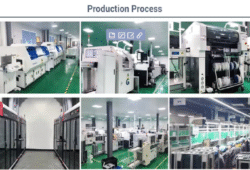 Posted On
Posted On
Beyond Spreadsheets: Data-Driven Inventory Planning for Smarter Decisions
 Posted On
Posted On
Beyond Spreadsheets: Data-Driven Inventory Planning for Smarter Decisions
Inventory planning plays a crucial role in maintaining operational efficiency and maximizing profitability. Traditional spreadsheet-based methods are no longer sufficient to handle the complexities and volume of data involved in inventory management. With the advent of advanced analytics and data-driven decision-making, businesses can now leverage sophisticated tools and techniques to optimize their inventory planning processes.
Limitations of Spreadsheets in Inventory Planning
Spreadsheets have long been the go-to tool for managing inventory due to their ease of use and familiarity. However, they have several inherent limitations that can hinder effective inventory planning. Firstly, spreadsheets are prone to human error, as manual data entry and formula calculations increase the risk of mistakes. These errors can lead to inaccurate inventory levels, resulting in stockouts or excess inventory.
Secondly, spreadsheets lack the capability to handle large volumes of data efficiently. As businesses grow and expand, the complexity and scale of inventory data increase exponentially. Spreadsheets often struggle to process and analyze this data in a timely manner, leading to delays and inefficiencies in decision-making. Spreadsheets provide limited visibility into historical data and lack predictive capabilities. They rely on static data snapshots, making it difficult to track trends, identify patterns, and forecast demand accurately.
How Predictive Analytics Are Used in Inventory Planning
Utilizing predictive analytics in inventory planning can enhance a company’s performance in a dynamic market where there is a strong demand for its products. By leveraging predictions based on factors such as weather, holidays, and economic trends, the company can effectively mitigate backorders and avoid holding excessive stock levels.
Incorporating a predictive analytics solution enables the company to lower costs associated with surplus inventory, prevent instances of stockouts, and achieve more precise forecasts of demand and profitability.
Predictive inventory analytics offers additional benefits, including:
- Prioritizing stock allocation based on profitability and demand.
- Determining precise procurement levels for production, manufacturers, and suppliers.
- Mitigating disruptions in the supply chain by identifying potential issues in advance.
- Forecasting demand and revenue accurately, aiding in strategic decision-making.
- Optimizing transportation routes and making necessary adjustments when needed.
- Reducing waste by detecting trends in damaged items from suppliers.
- Enabling the marketing team to configure suggestive selling strategies based on buyer trends, excess stock, or popular items.
By adopting predictive inventory analytics, companies can optimize their inventory planning practices and gain a competitive edge in a fast-paced market with high demand for their products.
How Inventory Analytics Enhances Inventory Optimization?
The combination of AI and ML capabilities offers the potential to overcome common inventory challenges and predict demand accurately. By making data-driven decisions based on accurate forecasting, businesses can prevent issues like inventory shortages, overselling, and shrinkage, which can significantly impact costs and profitability.
In today’s consumer-driven market, customers expect fast delivery and immediate satisfaction. They anticipate receiving their ordered items within 24 to 48 hours, and retailers must ensure they avoid out-of-stock situations and delivery delays to remain competitive. If a vendor promises a two-day delivery, customers expect to receive their items within 48 hours or even sooner. Failure to meet these expectations can lead customers to switch to a competitor for future purchases. Customer loyalty is no longer the primary factor for buyers. The critical factor is the ability to purchase the exact product they desire, precisely when they want it.
Addressing the demands of today’s consumers is challenging and requires the utilization of vast amounts of data stored in a centralized warehouse and connected to a modern inventory management solution. Customer, product, order, supplier, and procurement data are all essential for making intelligent decisions. Leveraging prediction-based models that incorporate historical big data empowers businesses to optimize their inventory management, enhance customer satisfaction, and drive profitability.
Implementing Data-Driven Inventory Planning
To successfully implement data-driven inventory planning, businesses should follow a systematic approach:
Data Collection and Integration: Gather relevant data from internal sources (ERP systems, sales data, etc.) and external sources (market trends, industry reports, etc.). Integrate this data into a centralized database or a cloud-based analytics platform.
Data Cleansing and Validation: Cleanse and validate the collected data to ensure its accuracy and consistency. Remove duplicates, correct errors, and address missing values to prevent skewed analysis.
Analytics and Modelling: Utilize statistical analysis, machine learning algorithms, and forecasting techniques to derive meaningful insights from the data. Build models that can predict demand patterns, identify seasonality, and optimize inventory levels.
Real-time Data Monitoring and Visualization: Implement a dashboard or reporting system that provides real-time visibility into inventory levels, demand forecasts, and key performance indicators. This allows stakeholders to monitor inventory metrics and make data-driven decisions promptly.
Continuous Improvement and Optimization: Regularly review and refine the data-driven inventory planning process. Incorporate feedback, evaluate the accuracy of forecasts, and identify areas for improvement. Continuously update and fine-tune the models to adapt to changing market conditions and business dynamics.
Collaboration and Integration with Stakeholders: Foster collaboration between departments such as sales, marketing, operations, and procurement. Share insights, forecasts, and inventory data to align cross-functional strategies and ensure a coordinated approach to inventory planning.
Scalability and Flexibility: As the business grows and evolves, ensure that the data-driven inventory planning system can scale and adapt accordingly. Consider cloud-based solutions that offer scalability, flexibility, and the ability to integrate with other systems seamlessly.
About the Company
Fountain9 is a reputable Y Combinator-backed company specializing in precise inventory planning software, assisting businesses in effectively monitoring and maintaining optimal stock levels to prevent stockouts. Their inventory forecasting software, powered by AI, enables companies to obtain accurate forecasts and automate the entire purchase planning process by proactively placing orders before items become unavailable. The software accurately predicts demand and devises inventory plans that minimize waste and prevent issues of overstocking or understocking at the granular level (SKU level).
The software is equipped with an advanced demand sensing and pricing engine that takes into account various factors like historical sales trends, seasonality, holidays, markdown events, and pricing changes. This holistic approach enables the software to predict future inventory requirements and optimize prices accordingly. Additionally, it aligns the predicted inventory demand with supply-side data, allowing you to identify ideal suppliers and determine appropriate replenishment quantities. This helps minimize the risk of stockouts and unnecessary inventory waste.








